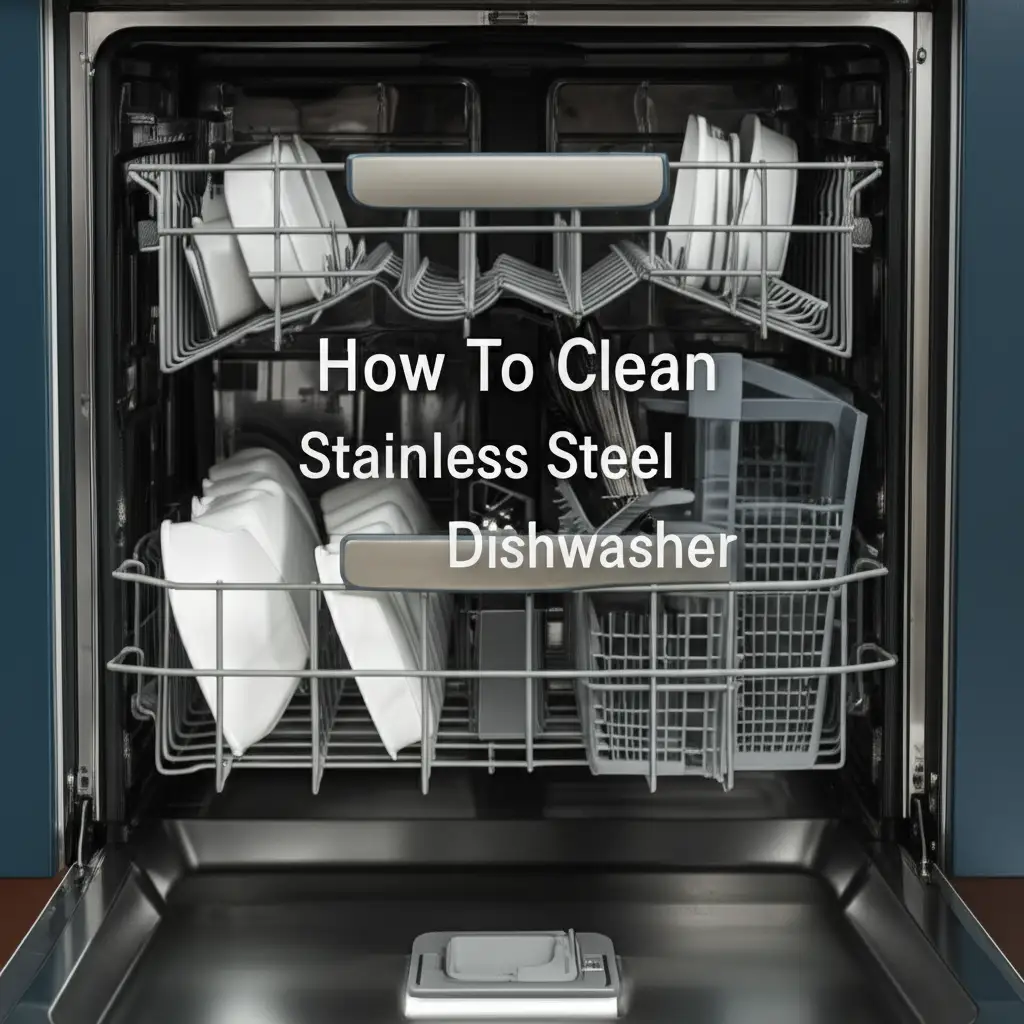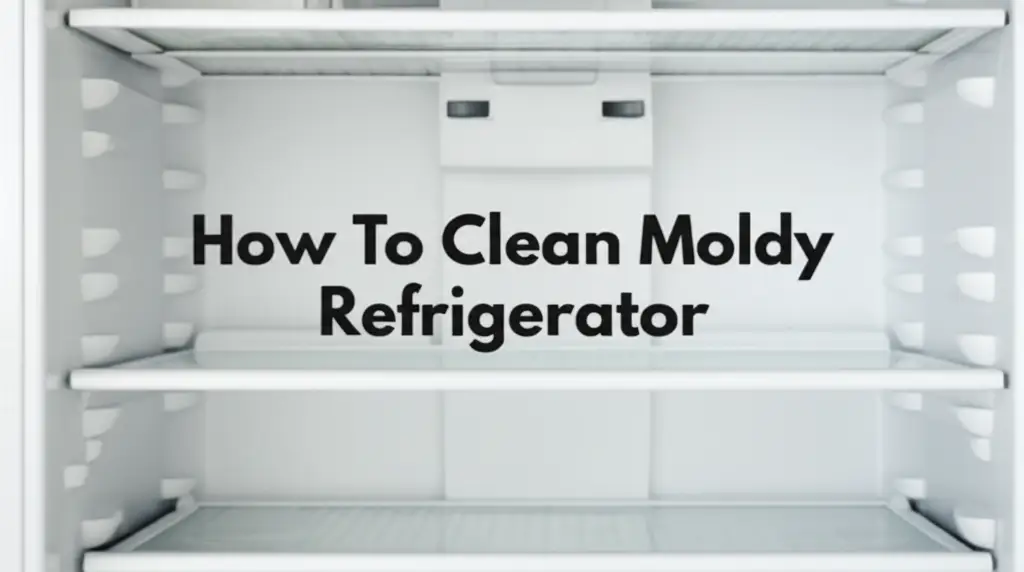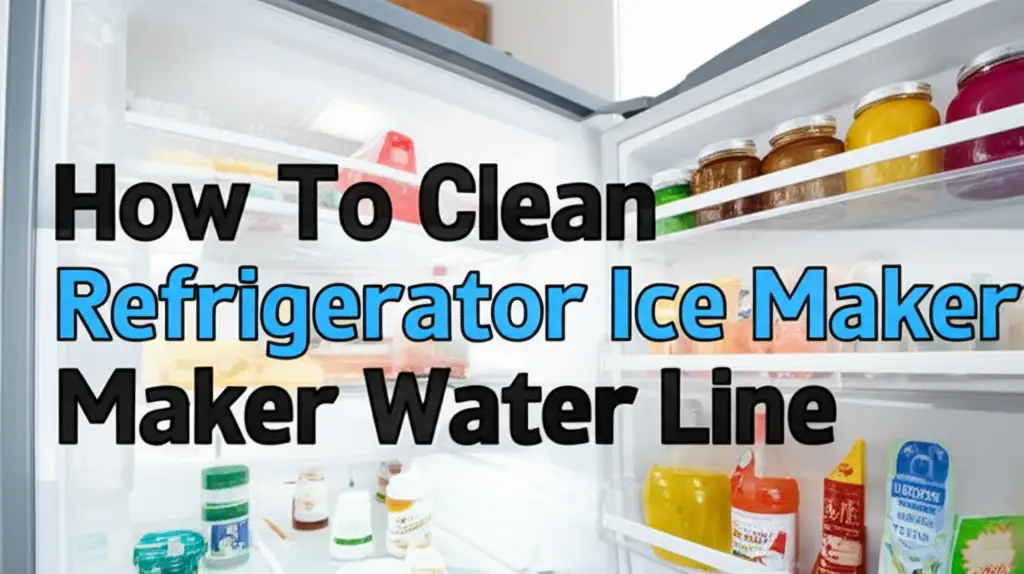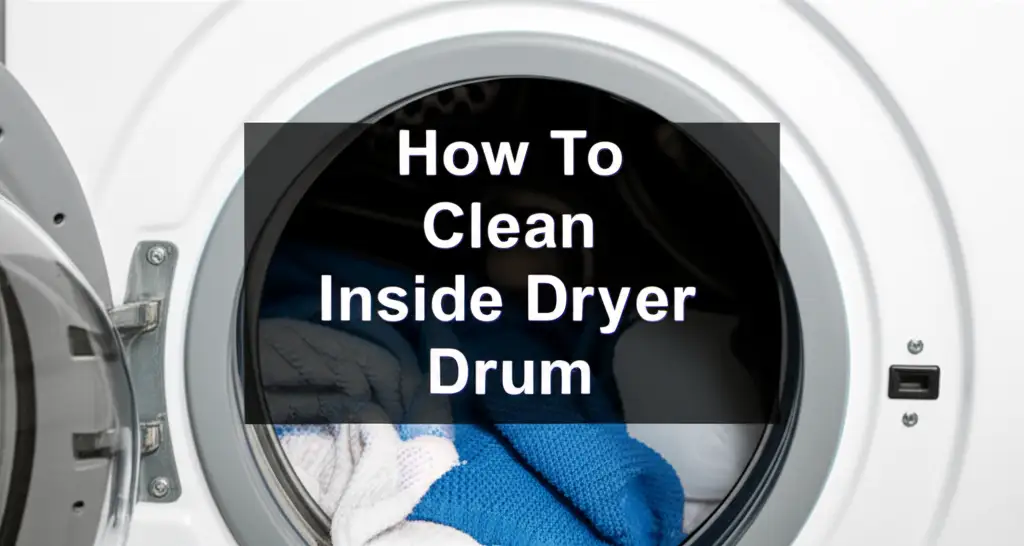· Appliance Care · 17 min read
How To Clean Gevi Ice Maker
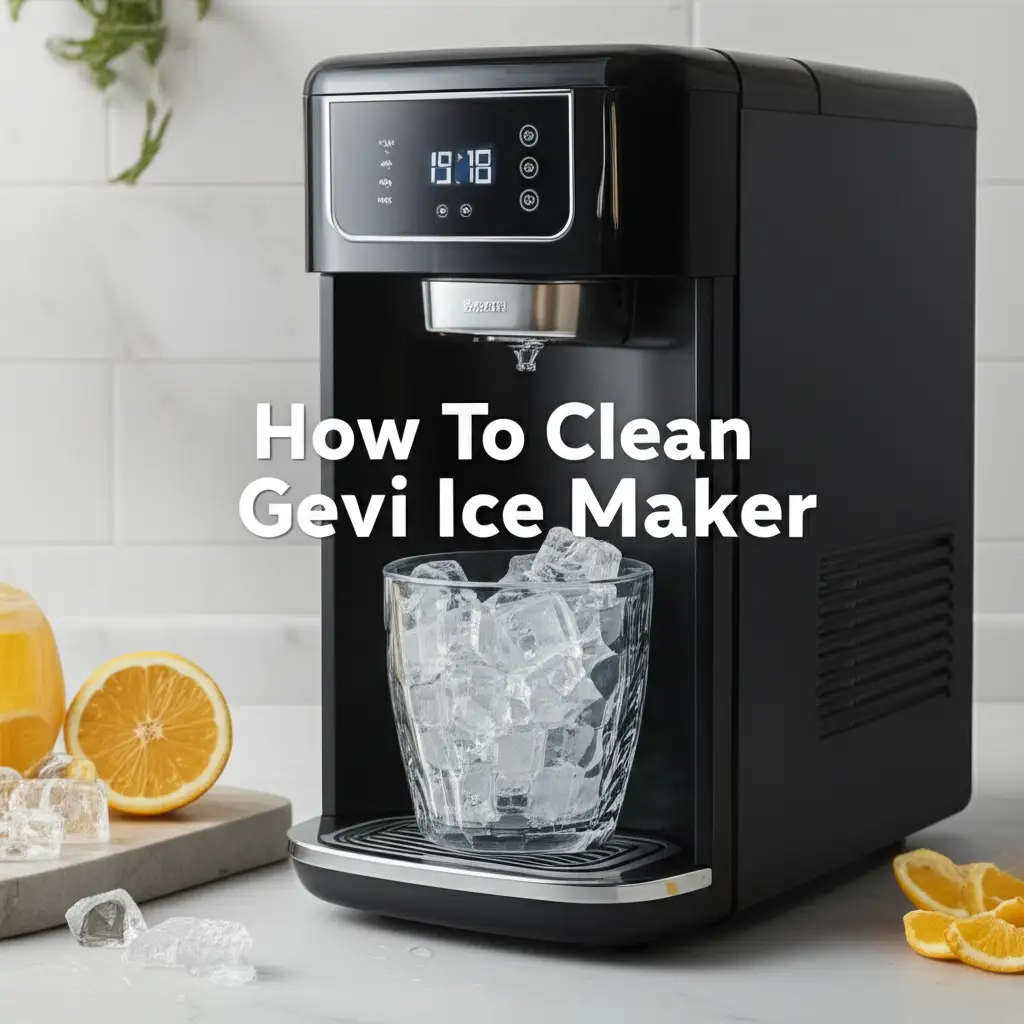
Mastering the Clean: How to Clean Your Gevi Ice Maker Effectively
Imagine a refreshing glass of ice-cold water on a hot day. The crisp ice cubes clink gently, promising cool relief. But what if those ice cubes carry a strange odor or taste? A dirty ice maker can quickly turn that refreshing experience into a disappointing one. Specifically, knowing how to clean Gevi ice maker models is important for fresh, clean ice every time.
Gevi ice makers are popular for their convenience and efficiency, especially the countertop varieties. Like any appliance that handles water, they need regular cleaning. Mineral buildup, mold, and bacteria can accumulate inside the machine over time. This can affect ice quality and even the lifespan of your appliance. This guide will walk you through why, when, and exactly how to clean your Gevi ice maker, ensuring it remains a valuable kitchen helper. We will cover essential supplies, step-by-step cleaning, deep descaling, and preventative measures.
Takeaway:
- Regularly clean your Gevi ice maker to prevent mold, mineral buildup, and bad odors.
- Use mild solutions like vinegar or citric acid for effective cleaning and descaling.
- Follow specific draining, scrubbing, and rinsing steps for thorough sanitation.
- Maintain proper hygiene by air-drying and using filtered water.
Cleaning your Gevi ice maker involves draining the water, wiping down internal surfaces with a mild solution like vinegar or citric acid, scrubbing away any buildup, rinsing thoroughly, and allowing it to air dry completely. Regular maintenance keeps your ice fresh and your appliance working well.
Why Regular Cleaning of Your Gevi Ice Maker Matters
You rely on your Gevi ice maker to produce clean, crisp ice. However, many people overlook the crucial task of regular maintenance. Ice makers, particularly those handling water, become breeding grounds for unseen issues. Understanding why regular cleaning is important helps you keep your Gevi unit performing at its best. It also helps you protect your health.
Water contains minerals. These minerals accumulate inside your ice maker over time. This buildup, often called limescale, can clog water lines and coat internal components. Limescale reduces the machine’s efficiency. It also affects the taste and clarity of your ice. My own experience with hard water taught me that mineral deposits can make ice cloudy and leave a slight residue.
Beyond mineral buildup, moisture inside the ice maker creates a perfect environment for mold and bacteria. These microorganisms can grow in damp, dark places. You might notice a pinkish slime or black spots in your machine. This is often mold or yeast growth. Consuming ice with these contaminants can lead to health problems. It certainly affects the taste and smell of your ice. Learning how to clean mold from portable ice maker is a critical step for healthy ice.
A dirty ice maker can also shorten its lifespan. Clogged components make the machine work harder. This causes premature wear and tear. Regular cleaning ensures all parts function smoothly. This extends the life of your Gevi appliance. It also keeps your ice tasting pure and fresh. Neglecting cleaning means your convenient ice supply can quickly become a health concern.
Essential Supplies for Cleaning Your Gevi Ice Maker
Before you begin the cleaning process, gather all necessary tools and cleaning agents. Having everything ready saves time and ensures a smooth cleaning experience. You probably have most of these items already in your home. I always make sure my cleaning arsenal is stocked before tackling any appliance.
The most important cleaning agent for your Gevi ice maker is white vinegar. White vinegar is a natural disinfectant and descaler. It effectively breaks down mineral deposits and kills many types of bacteria and mold. Many people also find that how to clean ice maker with vinegar is a simple and effective method. If you prefer an alternative, food-grade citric acid powder works well too. Mix about one to two tablespoons of citric acid with one liter of warm water.
You will also need a few soft cloths or sponges. Avoid abrasive scrubbers that can scratch the interior surfaces of your ice maker. A small, soft-bristled brush, like a clean toothbrush, can reach tight corners and crevices. These spots are often overlooked during a quick wipe-down. I find that a dedicated cleaning brush for appliances is always a good investment.
For general cleaning, a mild dish soap is helpful. You can use it to clean the ice bucket and exterior surfaces. Always choose a soap that rinses cleanly without leaving residue. You will also need a large basin or sink for draining the water. Having a few towels handy is also useful for spills and drying. Finally, ensure you have access to fresh, clean water for rinsing. This ensures no cleaning solution residue remains. Gathering these supplies ensures you are fully prepared to give your Gevi ice maker the thorough cleaning it deserves.
Step-by-Step Guide to Cleaning Your Gevi Ice Maker
Cleaning your Gevi ice maker is a straightforward process when you follow clear steps. This guide ensures you address all critical areas of the machine. I break down the process into manageable parts for a complete clean. You will have fresh, sparkling ice ready in no time.
1. Prepare for Cleaning
First, unplug your Gevi ice maker from the power outlet. Safety is always paramount when dealing with electrical appliances and water. Move the machine to a sink or a stable surface where you can easily drain water. Remove the ice basket and any other removable parts. Wash these parts separately using warm water and mild dish soap. Rinse them thoroughly and set them aside to air dry.
2. Drain the Water Reservoir
Locate the drain plug or cap at the bottom of your Gevi ice maker. Place a basin under the drain to catch the water. Carefully remove the plug and allow all water to drain out. This step removes stagnant water and loose debris. Once drained, replace the plug securely.
3. Clean the Interior with a Solution
Now, it is time to clean the internal components. Prepare your cleaning solution. For vinegar, fill the water reservoir with equal parts white vinegar and water. If using citric acid, mix one to two tablespoons of citric acid powder with one liter of warm water. Pour this solution into the water reservoir.
Start the ice-making cycle without ice in the basket. Allow the machine to run for a few minutes. This circulates the cleaning solution through the internal pumps and lines. After a few minutes, turn off the machine and unplug it again. Let the solution sit in the reservoir for about 15-20 minutes. This allows the cleaning agent to work on mineral deposits and grime. For general countertop ice makers, this circulation step is crucial for effective cleaning, similar to how to clean countertop ice maker in general.
4. Scrub and Rinse Thoroughly
After soaking, drain the cleaning solution completely. Now, use a soft cloth or sponge to wipe down all accessible internal surfaces. Pay close attention to the water reservoir, ice chute, and ice collection area. Use your small brush to clean any tight spots. If you see any stubborn mineral deposits or slime, gently scrub them away.
Once you have scrubbed, rinse the machine thoroughly. Fill the reservoir with fresh, clean water. Run the ice-making cycle for a few minutes to flush the system. Drain this water. Repeat this fresh water rinse cycle at least 2-3 times. This ensures all traces of the cleaning solution are gone. Any residual vinegar can affect the taste of your ice.
5. Dry and Reassemble
After the final rinse, drain all water again. Leave the lid open and allow the interior of the Gevi ice maker to air dry completely. This prevents any mold or mildew growth. Once dry, reassemble all the removable parts. You can then plug in your Gevi ice maker and enjoy fresh, clean ice. This detailed approach ensures every part of your Gevi unit gets the attention it needs. This thoroughness is what makes your ice truly pure.
Deep Cleaning and Descaling Your Gevi Ice Maker
While regular cleaning keeps your Gevi ice maker fresh, a deep clean and descaling addresses more stubborn issues. Mineral buildup, or limescale, is a common problem, especially if you live in an area with hard water. This calcium and magnesium residue can reduce your ice maker’s efficiency and even damage its components over time. Tackling this periodically ensures your machine performs optimally. I have found that a dedicated descaling session can make a huge difference in performance.
The most effective descaling agent for your Gevi ice maker is white vinegar or food-grade citric acid. Both are natural and safe for most appliances. For a deep descaling using vinegar, you will want a higher concentration. Fill the water reservoir with a solution of 50% white vinegar and 50% water. Some sources even suggest using undiluted vinegar for very heavy buildup, but always check your Gevi manual first. If using citric acid, mix 2-3 tablespoons of citric acid powder into one liter of warm water. Dissolve it completely before adding it to the reservoir.
Pour the chosen descaling solution into your Gevi ice maker’s water reservoir. Plug in the machine and initiate the cleaning cycle if your Gevi model has one. If not, simply run the ice-making cycle for about 10-15 minutes. This circulates the powerful descaling solution through the internal pump, water lines, and ice-making components. The acidic solution will start dissolving the mineral deposits. After this circulation, turn off the machine and unplug it. Let the solution sit in the reservoir for at least 30 minutes, or even a few hours for heavy scale. This extended soak allows the acid to work thoroughly on the stubborn buildup.
After the soaking period, carefully drain the descaling solution from the ice maker. You might see cloudy or discolored water, which means the solution did its job. Next, it is crucial to rinse the machine thoroughly. Fill the reservoir with fresh, clean water and run a full cycle to flush out any remaining solution. Drain this water. Repeat the fresh water rinse cycle at least 3-5 times until there is no vinegar smell or residue. This is similar to how to clean ice maker with vinegar in general. For stubborn mold or slime, a manual scrub with a soft brush during the draining phase can further help. This complete deep cleaning and descaling process revitalizes your Gevi ice maker. It ensures it continues to produce clear, fresh-tasting ice for years to come. It also helps prevent issues like the development of pink mold, which can be addressed by understanding how to clean mold from portable ice maker.
Preventing Mold and Buildup in Your Gevi Ice Maker
Prevention is key to keeping your Gevi ice maker in top condition and reducing the need for frequent deep cleaning. A little regular attention goes a long way. I have learned that consistent small efforts save much larger cleaning headaches later. There are simple habits you can adopt to ensure your ice is always clean and fresh.
One of the most effective preventative measures is to use filtered water. Tap water contains varying levels of minerals, depending on your location. These minerals are the primary cause of limescale buildup. A good water filter pitcher or a water filtration system for your tap can significantly reduce the mineral content. This means less scale inside your Gevi ice maker. Less scale translates to better performance and less cleaning effort for you.
Another vital tip is to avoid leaving standing water in the reservoir for extended periods. If you are not using your Gevi ice maker for a day or two, it is best to drain the water. Stagnant water is an ideal environment for bacteria and mold to thrive. My personal rule is if it sits for more than 24 hours, drain it. After draining, leave the lid open for a while. This allows the interior to air dry completely. Moisture is the enemy of a clean ice maker.
Regular quick wipes are also highly effective. Every few days, take a clean, damp cloth and wipe down the accessible interior surfaces. This includes the ice basket area and the inner walls of the reservoir. This simple step removes any condensation or small splashes before they can develop into mold. If you see any signs of pink or black residue, address it immediately. This prevents the mold from spreading. Knowing how to clean mold with vinegar can be useful for these quick spot treatments.
Finally, consider performing a mini-rinse cycle weekly. Just run clean water through the system briefly, then drain it. This flushes out any newly introduced minerals before they can settle. By consistently applying these preventative measures, you will significantly reduce mold growth and mineral buildup. Your Gevi ice maker will stay cleaner, produce better ice, and require less intensive cleaning down the line.
Troubleshooting Common Gevi Ice Maker Cleaning Issues
Even with regular cleaning, you might encounter a few hiccups with your Gevi ice maker. Don’t worry, many common issues have simple solutions. I’ve faced these myself, and a bit of troubleshooting can usually get your machine back to optimal performance. Addressing problems quickly prevents them from escalating.
One common complaint is that the ice tastes or smells bad, even after cleaning. This usually means not all the cleaning solution was thoroughly rinsed out. Vinegar, while effective, leaves a strong odor if not fully flushed. The solution is to perform several additional rinse cycles. Fill the reservoir with fresh, clean water, run the machine for a few minutes, and then drain. Repeat this process three to five more times. You can also add a few drops of lemon juice to the rinse water for the final cycle. This helps neutralize any lingering smells. Ensure the machine air-dries completely after the final rinse.
Sometimes, after cleaning, the ice maker doesn’t seem to make ice efficiently. This could be due to a few reasons. First, check if you properly reassembled all parts. A misaligned ice basket or water line can disrupt the ice-making process. Second, residual cleaning solution might have affected the water sensor. Try running a few batches of plain water through the machine. Discard the first few batches of ice. This helps recalibrate the system. If the problem persists, ensure no small pieces of debris are clogging the water outlet or ice-making mechanism. A gentle inspection with a flashlight might reveal a hidden blockage.
Stubborn stains or heavy mold growth can be more challenging. If regular cleaning with vinegar or citric acid doesn’t completely remove tough stains, you might need a more concentrated approach. For very stubborn spots, make a paste with baking soda and a little water. Apply the paste directly to the stain, let it sit for 15-30 minutes, then scrub gently with a soft brush. Rinse thoroughly afterwards. For persistent mold, a solution of hydrogen peroxide (3% food-grade) can be used. Apply it to the affected area, let it sit for 10 minutes, then scrub and rinse extensively. Always rinse multiple times with plain water after using stronger solutions.
Lastly, if your Gevi ice maker still has issues after thorough cleaning and troubleshooting, it might be time to consult the user manual or contact Gevi customer support. Some problems might indicate a mechanical fault. These problems are beyond the scope of a home cleaning routine. For instance, issues with the water line could be related to broader plumbing, like when addressing how to clean refrigerator ice maker water line. However, most cleaning-related issues are solvable with persistence and the right approach.
Specific Gevi Models and Cleaning Nuances
Gevi manufactures a range of ice makers, primarily focusing on portable and countertop models. While the general cleaning principles remain consistent across most countertop ice makers, understanding the specific design of your Gevi unit can optimize your cleaning routine. Whether you have a compact bullet-ice maker or a larger nugget ice machine, the core steps for how to clean Gevi ice maker are largely universal. However, some nuances exist.
Most Gevi ice makers are designed as portable or countertop units. This means they are self-contained and do not connect to a direct water line. This design simplifies cleaning, as you only need to manage the internal reservoir and components. Unlike refrigerator ice makers, there is no need to worry about water lines or complex plumbing. This is an advantage for ease of maintenance. The advice for how to clean table-top ice maker and how to clean countertop ice maker directly applies to nearly all Gevi models.
The primary difference among Gevi models often lies in their capacity, ice type (bullet, nugget, cube), and specific features like self-cleaning modes. If your Gevi ice maker has a dedicated “clean” button or self-cleaning cycle, this simplifies part of the process. You would typically add your cleaning solution (vinegar or citric acid mixture) to the reservoir and initiate this cycle. The machine then circulates the solution automatically, cleaning its internal parts. Even with a self-cleaning feature, manual scrubbing of accessible surfaces and thorough rinsing remains essential. The self-clean cycle often focuses on the internal water path, not the ice basket or collection bin.
For Gevi models without a self-cleaning feature, the manual process outlined in this article is your best approach. Pay extra attention to any removable parts specific to your model. Some Gevi units might have a removable tray or a more intricate ice chute. Ensure you dismantle these components if possible. This allows for a more thorough wash. Always refer to your specific Gevi user manual for any model-specific cleaning instructions or warnings. While this guide covers general best practices, the manufacturer’s manual will provide exact details on your appliance. This ensures you maintain your Gevi ice maker safely and effectively, regardless of its specific model.
FAQ Section
How often should I clean my Gevi ice maker? You should clean your Gevi ice maker at least once a month if you use it regularly. If you use it daily or live in an area with hard water, consider cleaning it every two weeks. If the ice tastes off or you see any visible grime, clean it immediately. Regular cleaning prevents buildup and ensures fresh ice.
Can I use bleach to clean my Gevi ice maker? No, you should avoid using bleach to clean your Gevi ice maker. Bleach can be harsh and may damage internal components. It is also difficult to rinse completely, potentially leaving harmful residues in your ice. Stick to safer alternatives like white vinegar or food-grade citric acid for effective cleaning and sanitation.
What causes pink slime in an ice maker? Pink slime in an ice maker is typically caused by airborne bacteria or yeast, often Serratia marcescens. This bacterium thrives in damp, dark environments and feeds on minerals in water. Regular cleaning, thorough drying, and using filtered water can help prevent its growth. It indicates your machine needs a deep clean.
Is it safe to use vinegar in my Gevi ice maker? Yes, it is perfectly safe to use white vinegar to clean your Gevi ice maker. White vinegar is a natural descaler and disinfectant. It effectively breaks down mineral deposits and kills mold and bacteria. Always ensure you rinse the machine thoroughly multiple times after using vinegar to remove any residual smell or taste.
Why does my ice taste bad after cleaning? If your ice tastes bad after cleaning, it is likely due to residual cleaning solution, most commonly vinegar. You need to rinse the machine more thoroughly. Run several cycles of plain, fresh water through the ice maker, discarding the water each time. Continue until the unpleasant taste or smell is completely gone.
Conclusion
Keeping your Gevi ice maker clean is not just about aesthetics; it is about health, taste, and the longevity of your appliance. I hope this comprehensive guide has given you all the tools and knowledge you need. Now you understand how to clean Gevi ice maker models thoroughly. You can confidently tackle any cleaning challenge. From understanding the importance of regular maintenance to implementing deep descaling techniques, you are now equipped.
Remember, consistent cleaning prevents mineral buildup and inhibits the growth of mold and bacteria. It ensures your Gevi ice maker always produces fresh, clear, and odor-free ice. A few simple steps performed regularly make a big difference. Embrace these cleaning habits. They will keep your Gevi ice maker a reliable and hygienic source of cool refreshment. Go ahead, give your Gevi ice maker the attention it deserves, and enjoy pristine ice for years to come!
- Gevi ice maker
- ice maker cleaning
- portable ice maker
- appliance maintenance
- kitchen cleaning

